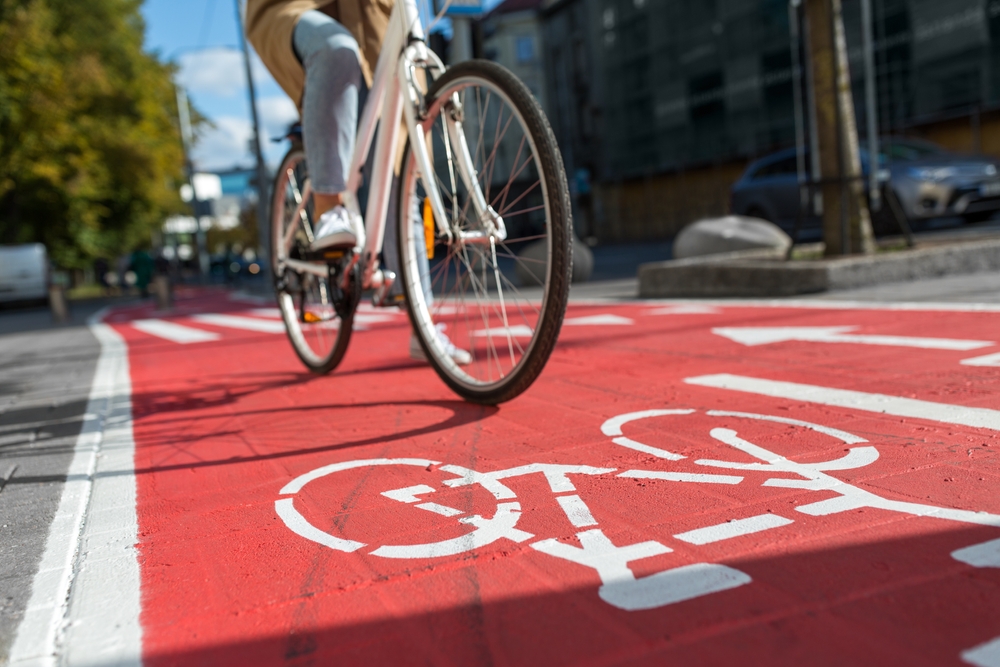Discover Surprising Health Benefits of Biking: More than fitness! Boost mood, save money, and go green. Ride for a healthier you & planet.
Beyond the Basics: 4 Surprising Health Benefits of Biking
Biking is a common form of exercise and transportation that offers numerous advantages. Many people ride bikes for fun, fitness, or commuting. This article outlines the diverse benefits of biking to help understand why it holds significant value in our daily lives.
Health Benefits
Regular biking can lead to a healthier lifestyle. It’s an efficient form of cardiovascular exercise. It improves heart health by boosting circulation. This can lower blood pressure and reduce the risk of heart disease.
Biking strengthens muscles, particularly in the legs, hips, and lower back. Contrary to some beliefs, it’s a low-impact exercise. This makes it less stressful on joints compared to running or other high-impact sports. This makes biking suitable for people of all ages and fitness levels.
Mental health benefits from biking should not be overlooked. Exercise releases endorphins, which improve mood and reduce stress. Many find biking a relaxing activity that helps clear the mind. Studies also suggest regular biking can reduce symptoms of depression and anxiety.
Environmental Benefits

Biking is environmentally friendly. It produces zero emissions compared to cars and motorcycles. This contributes to a reduction in air pollution and our carbon footprint. More bikes on the road can lead to cleaner air in cities and towns.
The production and disposal of bikes have a smaller environmental impact relative to motor vehicles. Bikes generally require fewer resources to manufacture. They also have a longer lifespan when maintained properly. This makes them a more sustainable option overall.
Economic Benefits
Beyond the well-known cost-effectiveness of biking—with bikes being cheaper to purchase and maintain, and eliminating fuel costs—there are also surprising health benefits of biking that contribute to overall economic well-being. Furthermore, communities that embrace cycling experience significant economic advantages. They require less infrastructure investment compared to automobile-centric areas, and the presence of a strong biking culture can attract tourism and businesses tailored to cyclists. This influx of activity boosts local commerce and creates job opportunities, demonstrating that the benefits of biking extend far beyond individual savings.
Convenience and Accessibility
Biking is often faster in urban areas. Bikes can bypass traffic and take shorter routes inaccessible to cars. They also eliminate the hassle of finding parking, making them a convenient choice for short trips and commutes.
Bikes are accessible to a wide range of people. They don’t require a license or extensive training. This opens up mobility options for those who cannot drive. This includes young people, seniors, and individuals without access to a car.
Community Benefits
Biking fosters a sense of community. Group rides and cycling clubs bring people together. They encourage social interaction and shared experiences. Safe biking infrastructure also benefits pedestrians, creating healthier public spaces.
Bike-friendly communities often exhibit lower crime rates. Increased presence of cyclists and pedestrians can lead to more vigilance and a greater sense of safety.
Time Efficiency and Flexibility
Biking can be incorporated easily into daily routines. It serves as both exercise and transportation simultaneously. This saves time compared to separating the two activities. Commuters who bike to work can efficiently integrate fitness into their busy schedules.
Biking provides flexibility. Riders can adjust routes and timings based on their preferences. This is harder to achieve with public transport schedules or traffic-dependent car commutes.
Improved Road Safety

Safety around biking has improved with dedicated bike lanes and awareness campaigns. More cyclists on the road can lead to better traffic safety. Motorists become more aware and cautious around cyclists.
Bike lanes and trails reduce the interaction between bikes and cars. This lowers the chances of accidents. Cyclists also benefit from the development of better cycling equipment, including helmets and lights, enhancing their safety on the roads.
Educational Opportunities

Biking can be educational for children and adults alike. It teaches road safety early to children. It instills an understanding of traffic rules and awareness. This can translate to safer road behavior in the future, whether biking or driving.
For adults, biking can be an ongoing learning experience. Understanding bike mechanics, maintenance, and repair becomes a valuable skill. It fosters a sense of independence and capability.
Enhanced Mobility
Bikes can be used in varied terrains and environments. They are suitable for urban settings, rural areas, and even mountainous regions. This versatility makes biking a practical mode of transport in diverse conditions.
Foldable bikes and bike-sharing programs increase mobility options. They can be combined with other transport modes, like buses and trains. This enhances the flexibility and reach of bikers, making it possible to travel longer distances with ease.
Low Barrier to Entry
Biking requires minimal initial investment. A basic bike and helmet are generally affordable. This low barrier to entry makes biking accessible to a broader demographic. No special training or membership is required, unlike some sports or fitness activities.
Free or low-cost community programs promote biking. These can include workshops on bike safety and maintenance. Some cities also offer rent-free biking schemes, encouraging more people to try biking without a financial commitment.
Conclusion
Biking presents various benefits across health, environmental, economic, and social spheres. Particularly, the surprising health benefits of biking emphasize why it remains a popular choice for many around the globe. Whether for commuting, exercise, or leisure, biking has something to offer for everyone.
